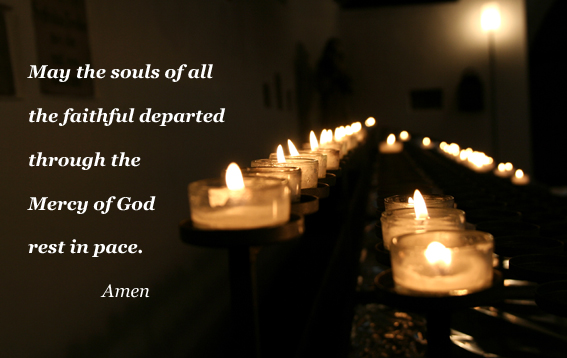
Dear Marian Helpers,
One night, St. Faustina had a vision of Purgatory that should very well have a profound effect on the spiritual lives of us all. Here’s what she described: [It was] a misty place full of fire in which there was a great crowd of suffering souls. They were praying fervently, but to no avail, for themselves; only we can come to their aid…. I asked these souls what their greatest suffering was. They answered me in one voice that their greatest torment was longing for God…. I wanted to talk with them some more, but my Guardian Angel beckoned me to leave. We went out of that prison of suffering…. Since that time, I am in closer communion with the suffering souls (Diary of Saint Maria Faustina Kowalska, 20).
As we prepare November, the month the Church dedicates to prayerfully remembering the souls in Purgatory, St. Faustina’s concluding sentence provides rich ground for reflection. She comes into closer communion with the suffering souls in Purgatory. How can we understand this “closer communion,” and what does it mean for our own relationship with the suffering souls?
First — we must recognize that the souls in Purgatory are persons — persons just like you, me, and St. Faustina. Sadly, unless we’ve experienced the death of a close family member or a friend, the souls in Purgatory may seem unreal, or so distant from us that we do not immediately recognize their continuing existence and personhood. Saint Faustina helps us to understand how real they are. She looked them in the eyes. She recognized their humanity because she could see them beyond the veil of death, which our materialistic culture so often shrouds from our understanding.
Secondly — we must seek communion with the suffering souls by sharing in their suffering. Although we do not fully comprehend the sufferings of Purgatory, we have all encountered suffering on this earth. Saint Faustina also knew the sufferings of earth, and she herself had undergone much spiritual suffering before this vision. On that basis, St. Faustina immediately recognized and sympathized with the suffering of the souls in Purgatory. Through our sufferings, we can do the same.
Thirdly — we can enter communion with the suffering souls through prayer. Their prayer for themselves, though “fervent,” is of no avail. We, however, “can come to their aid” along with Mary and the saints and assist their unavailing prayers. The closer we come into communion with the souls in Purgatory, the more effective is our prayer. This is a fundamental principle of the “communion of saints”: The bond of love and prayer is never broken. Even in earthly justice, the ardent petition of a close friend will win more sympathy with the judge than the occasional advocacy of a distant bystander. Similarly, the fervent prayer of one who loves the souls in Purgatory is more efficacious with the God for whom they long. It opens the floodgates of His mercy for them. This leads to the fourth way of communion with the suffering souls — which combines the first three ways in a single gaze. Saint Faustina asked them one question: What their greatest suffering was. They replied unanimously: “longing for God.” (Br. Stephen, MIC – from archives of AMH Center – Stockbridge,MA)
*****
Please send us names of your deceased loved ones to remember in our daily Masses for the Holy Souls with Evening Prayer of Breviary offered during the Novena of Prayer for Holy Souls (November 1 to 9).
Fr. Mario
To send intentions for Holy Souls Novena use field : Prayer request (click here)
